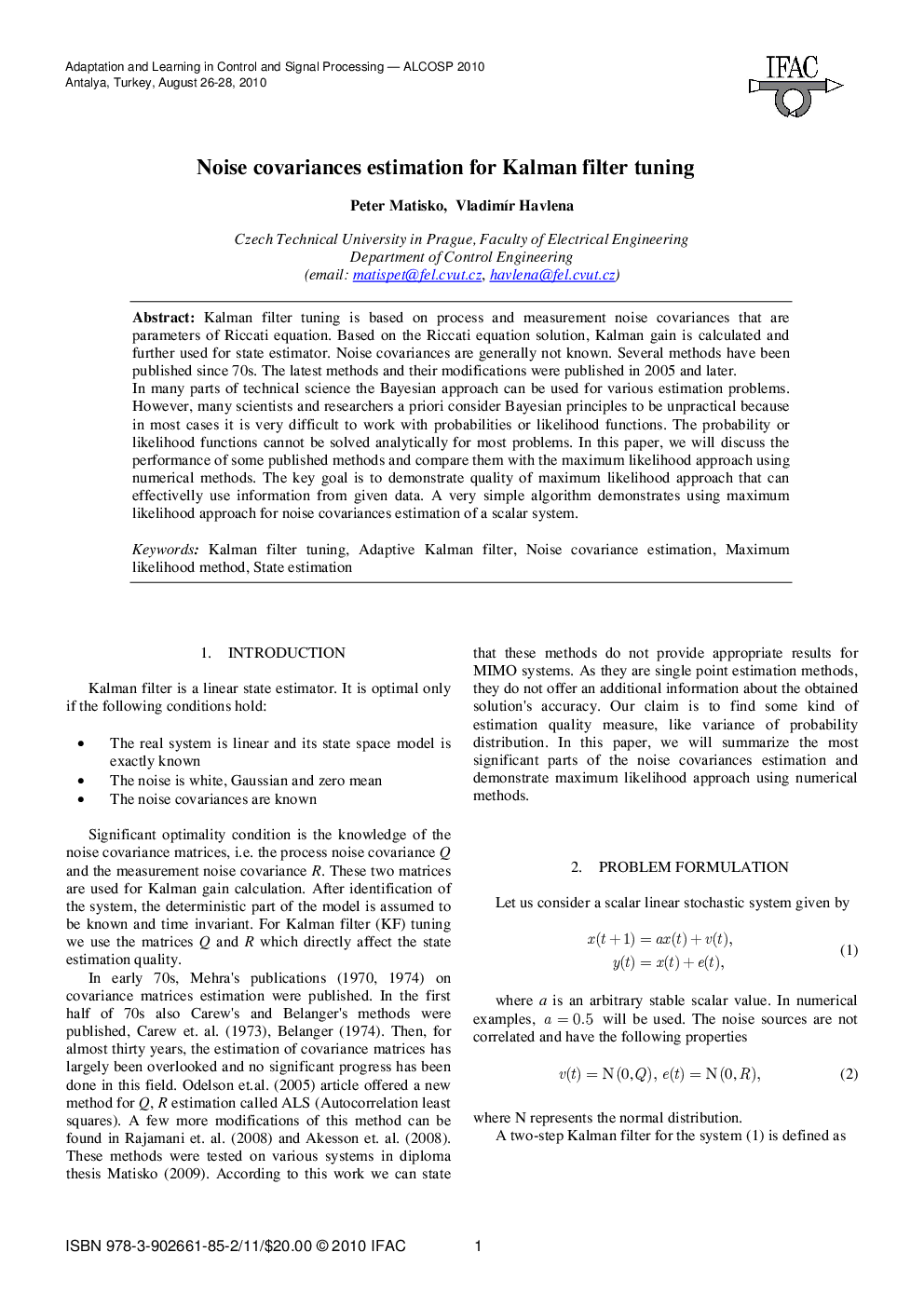| Article ID | Journal | Published Year | Pages | File Type |
|---|---|---|---|---|
| 716810 | IFAC Proceedings Volumes | 2010 | 6 Pages |
Kalman filter tuning is based on process and measurement noise covariances that are parameters of Riccati equation. Based on the Riccati equation solution, Kalman gain is calculated and further used for state estimator. Noise covariances are generally not known. Several methods have been published since 70s. The latest methods and their modifications were published in 2005 and later.In many parts of technical science the Bayesian approach can be used for various estimation problems. However many scientists and researchers a priori consider Bayesian principles to be unpractical because in most cases it is very difficult to work with probabilities or likelihood functions. The probability or likelihood functions cannot be solved analytically for most problems. In this paper we will discuss the performance of some published methods and compare them with the maximum likelihood approach using numerical methods. The key goal is to demonstrate quality of maximum likelihood approach that can effectivelly use information from given data. A very simple algorithm demonstrates using maximum likelihood approach for noise covariances estimation of a scalar system.
